On this page I am focusing on the XR7-G specific items. Some were on the car and others are missing parts that I was able to locate (as noted in the text).
|
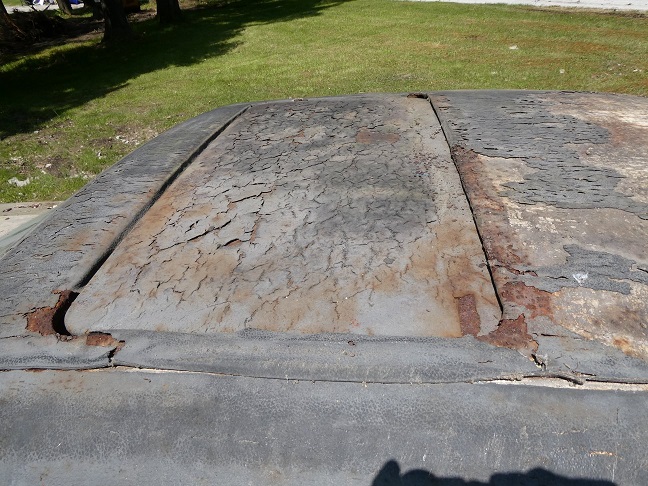
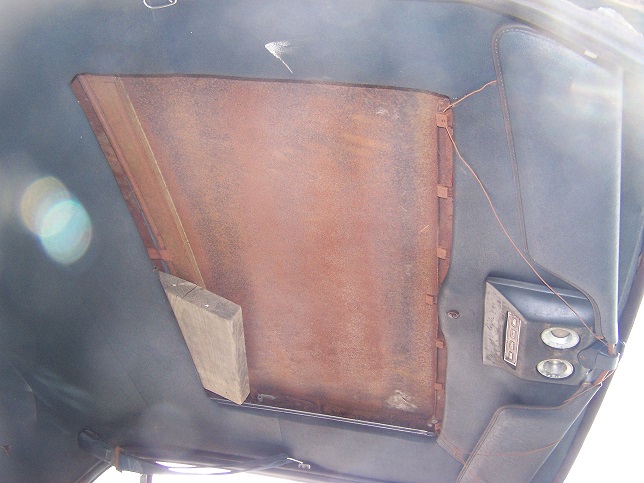
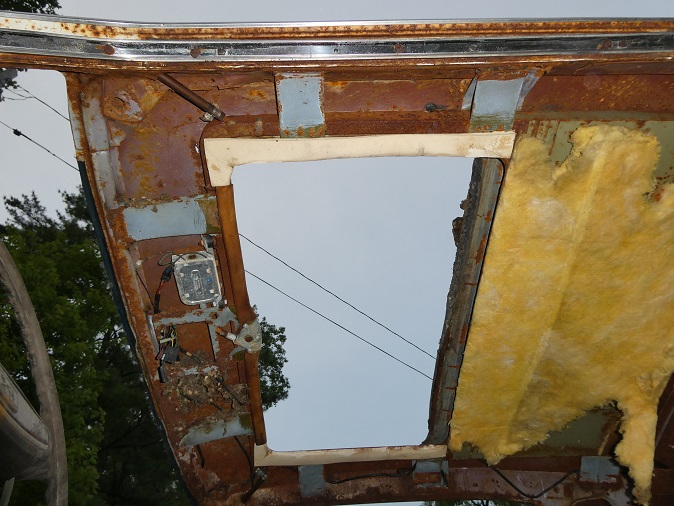 |
The most obvious feature is the power sunroof, which was installed by ASC (American Sunroof Corporation) back when they were the only ones installing them on cars. The big three were not installting sunroofs back then. They farmed
them out.
The original sunroof panel was lost when this car was pulled out of a salvage yard back in the 1980's. The story was that it blew away when being hauled down the highway. At least if came with a correct replacement, which I am sure was
quite diffcult to find back as sunroof cars are quite rare.
The picture on the right shows the sunroof inner workings after the headliner was removed. It is important to note that the only way to access the motor and gear is to remove the front part of the headliner as the early sunroof cars dod not
have a removable access panels. The only thing you can do when the sunroof stops working is to remove the pastic cap, made from armrest plugs, and insert a hand crank to turn the gear.
|
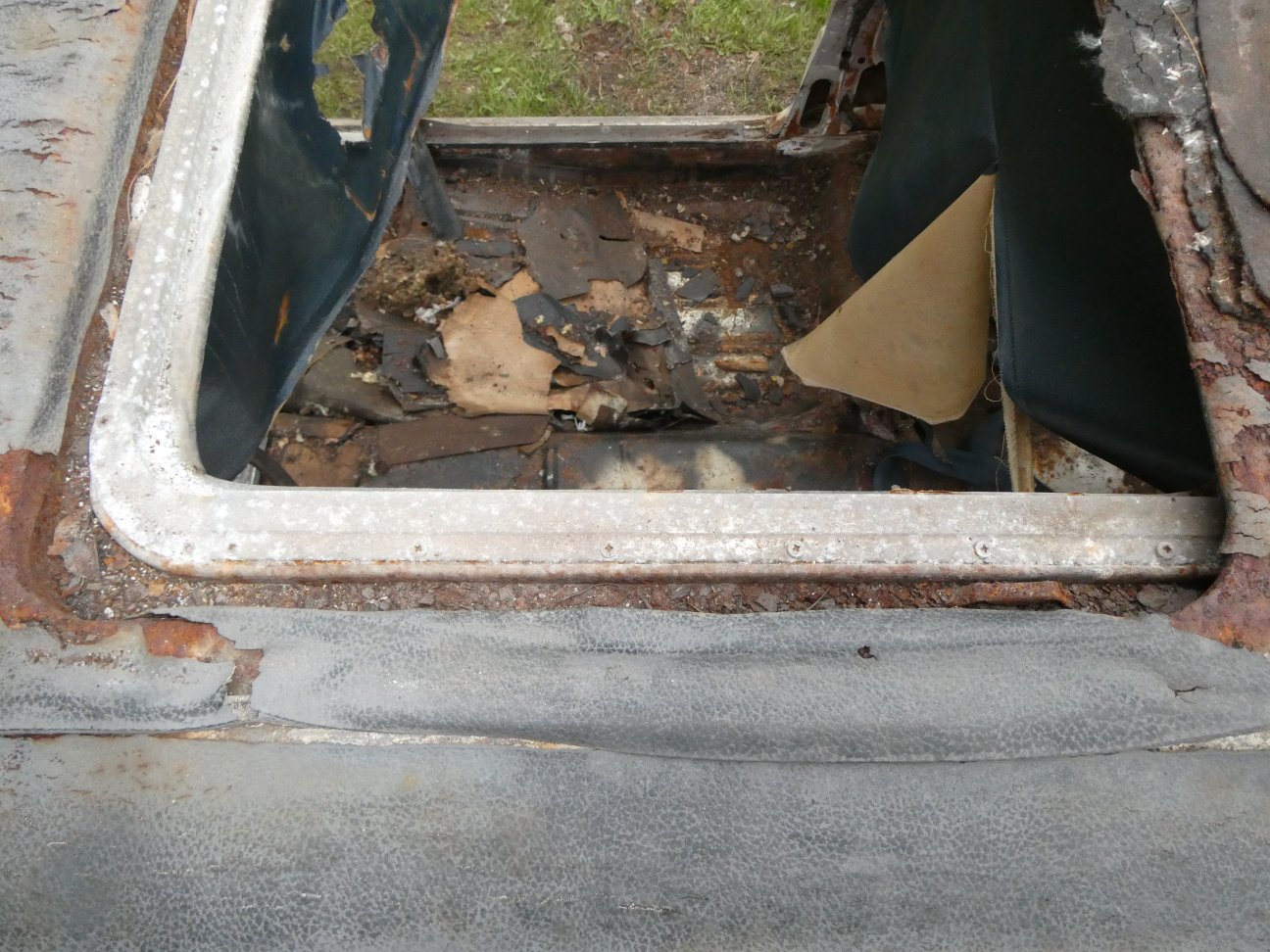
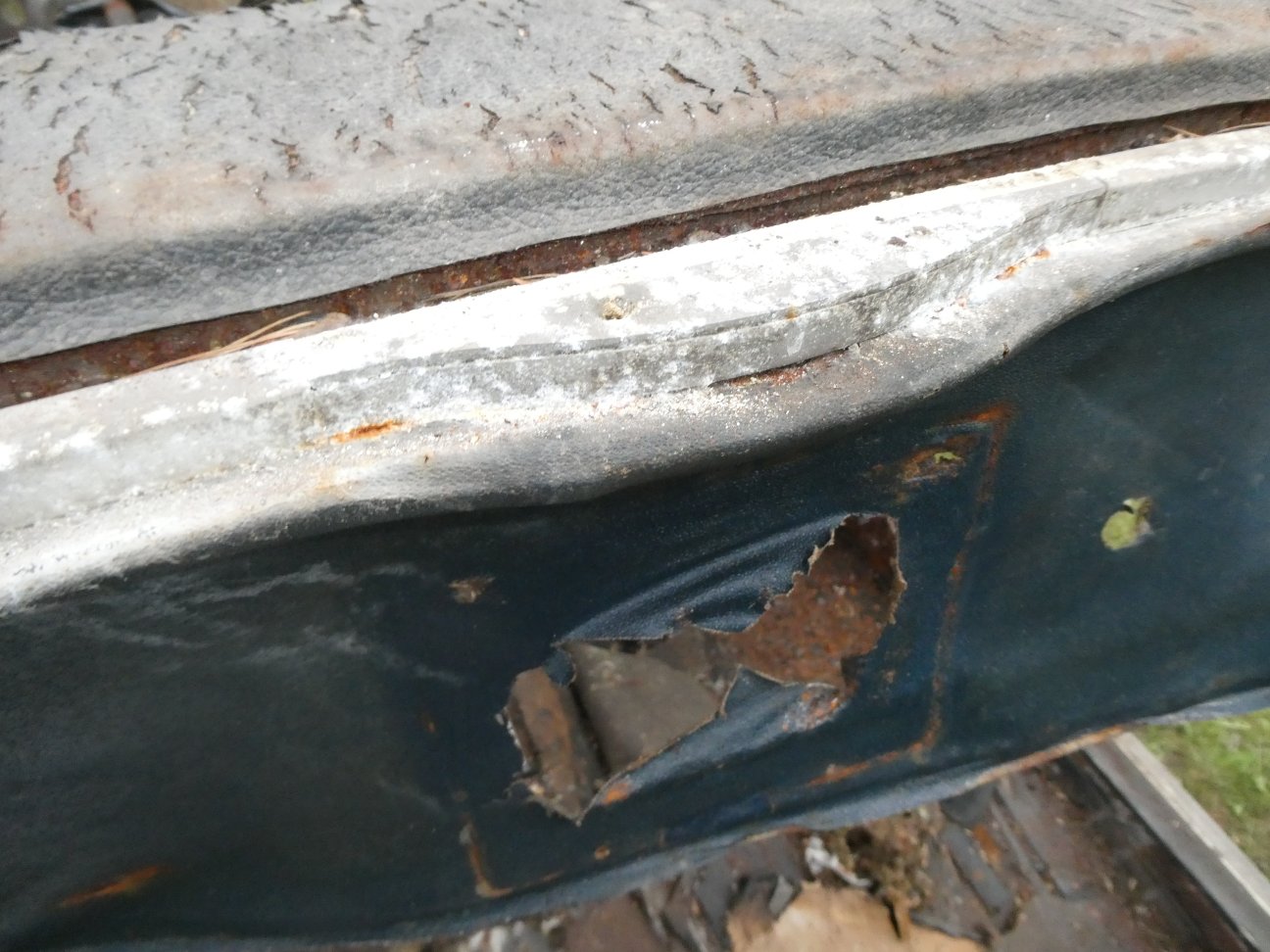
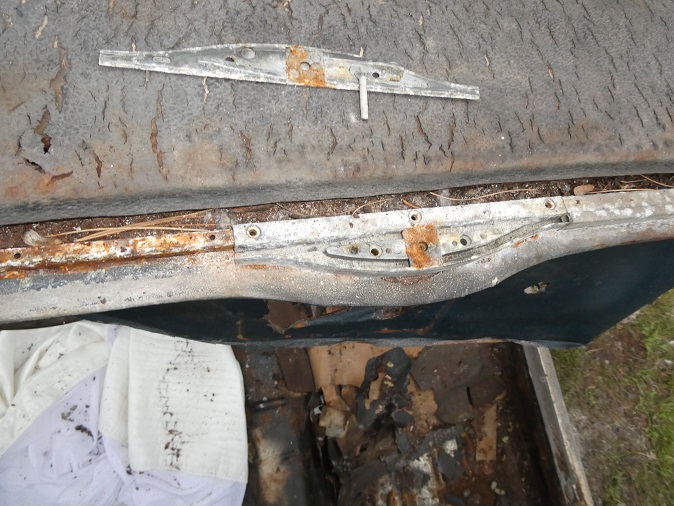
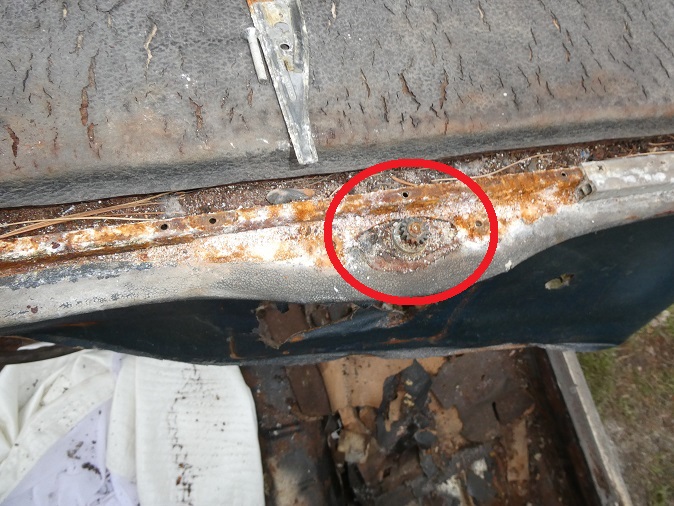 |
The sunroof panel is moved in and out of position using cables attached to each end, which interface with a DC motor driven gear. The gear shown in the rightmost picture is protected by an aluminmum cap which covers a guide track
that the cables move within. The cables are missing from this car. I suspect that they were removed when the car was in a salvage yard, which makes it understandable why the sunroof panel blew away as it was nologer restrained by its cables.
|
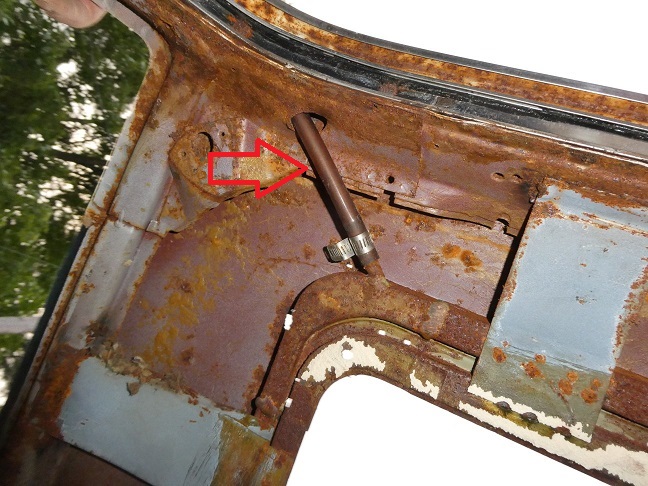
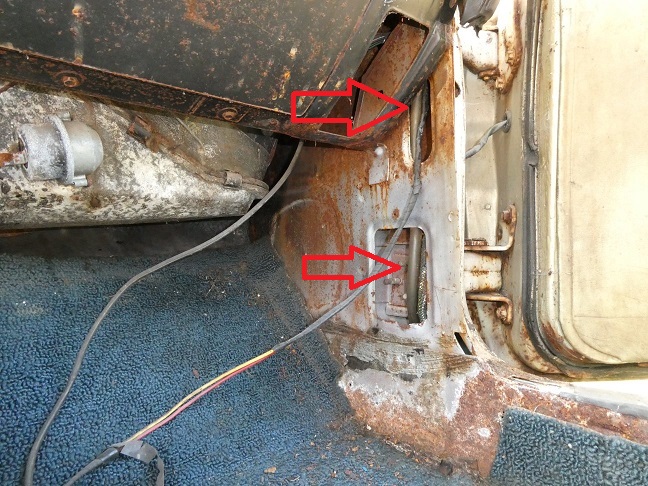
 |
The sunroof has a drain hose in each of the four corners. The leftmost picture is of the left front corner of the sunroof. The hoses are fed through the windshield pillars and are fed through holes the the A-pillars that ASC made. (RH inside & LH outside shown).
Water that leaked around the sunroof opening, would go through these hoses and end up draining on the inside of the front fenders. I'm sure that lead so some rust issues on some cars.
|
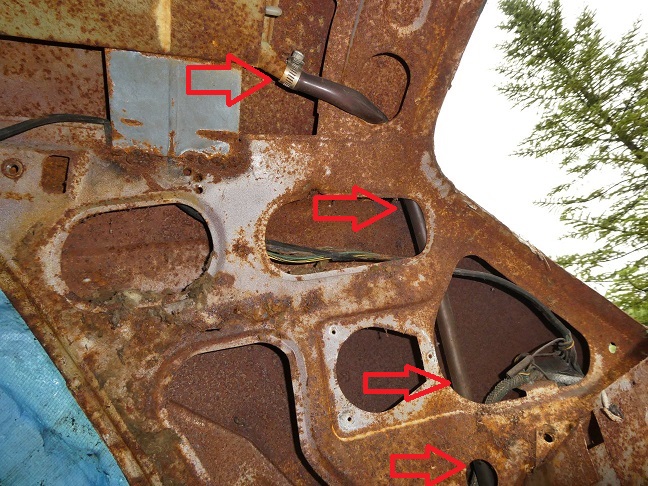
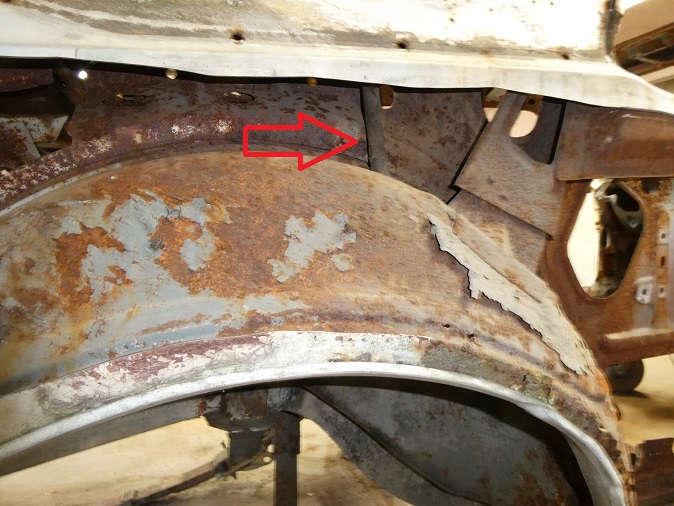 |
The drain hoses of the rear corners were feed down the C-pillars and were fed through holes drill on the tops of the out wheelhouses, where the water would drain right on top of the tires!
|
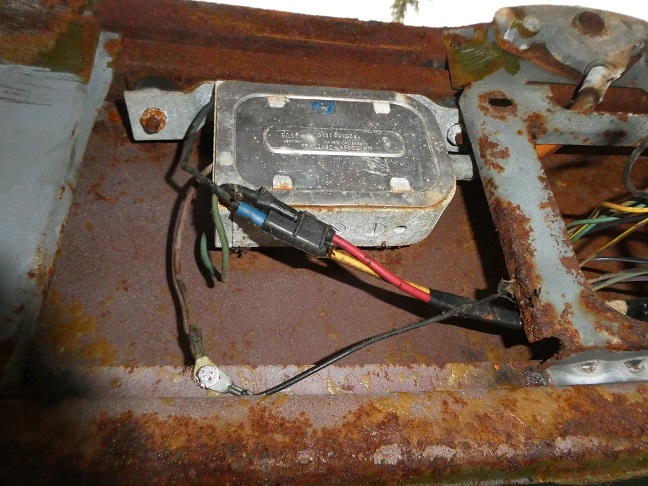
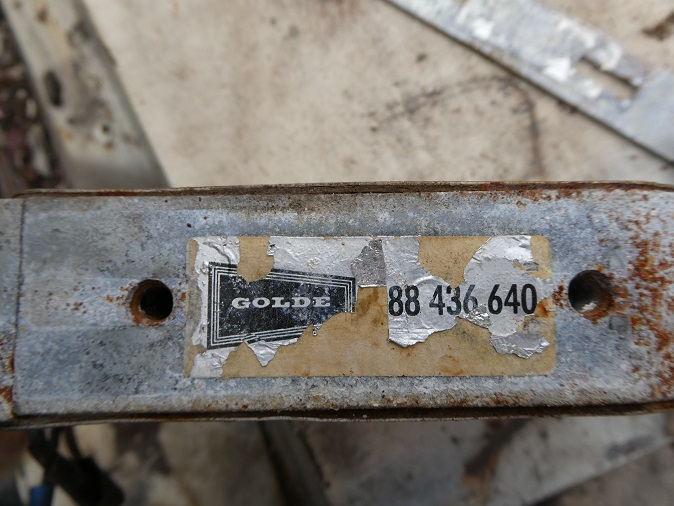
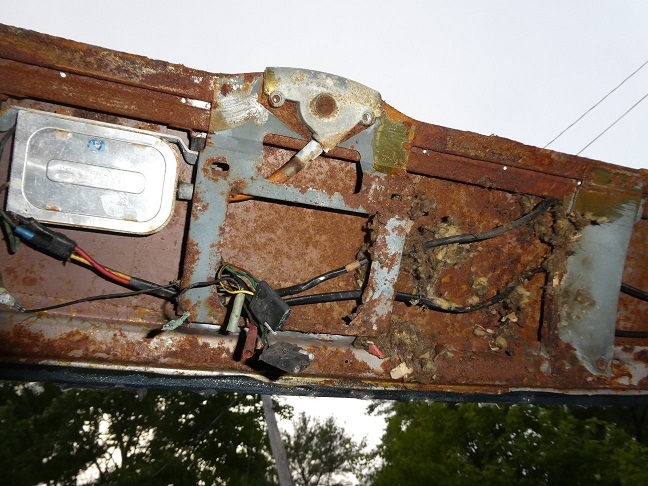
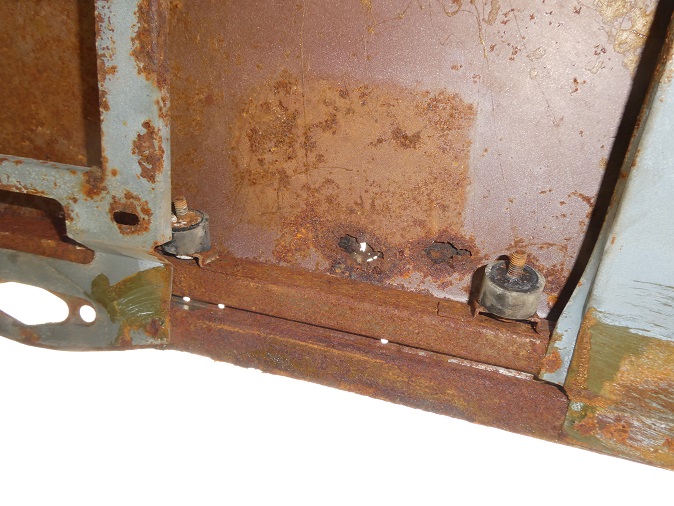 |
The sunroof motor was made by Golde, which is mounted to the sunroof frame using special angled rubber mounts (right most picture). This car will need a new roofskin, so I will be able to remove them to clean them up. More on this at a later date....
|
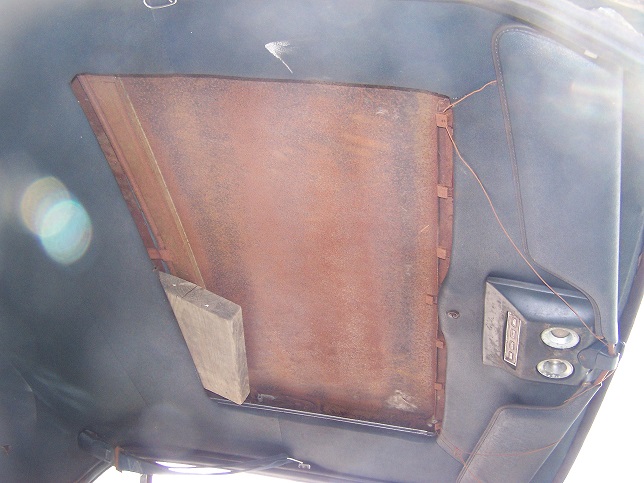

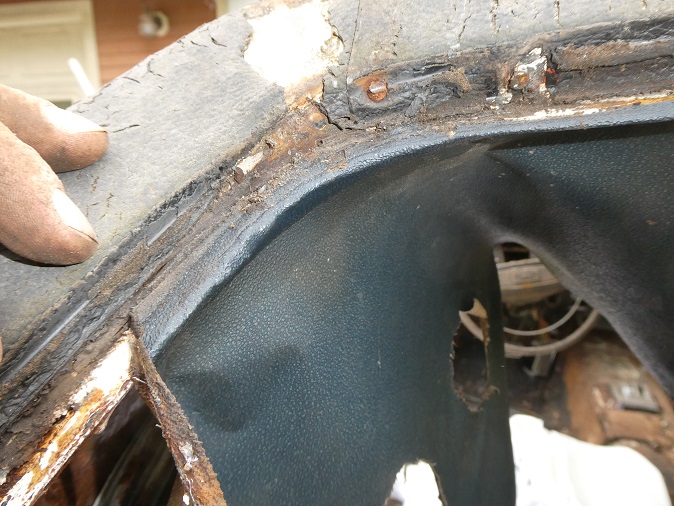 |
When the cars arrived at ASC from the factory, the headliners were already installed. ASC cut the headliners out at the front and unsewed them at the rearmost seam. ASC never removed the factory installed glass. Evidence of this can
be found at the front and rear window openings. The front has been cut and the rear has not.
|
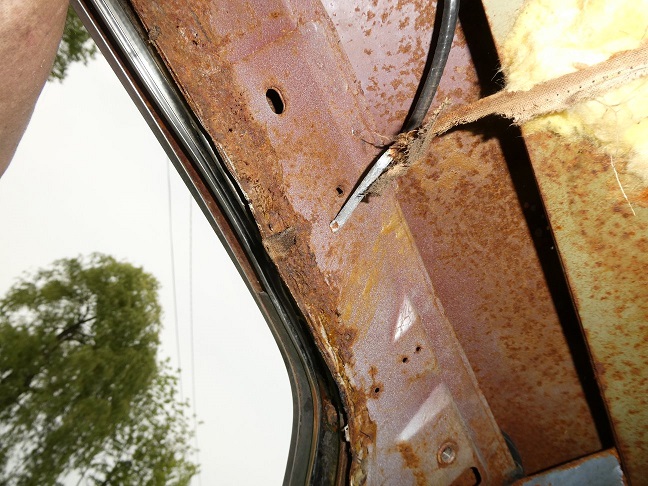
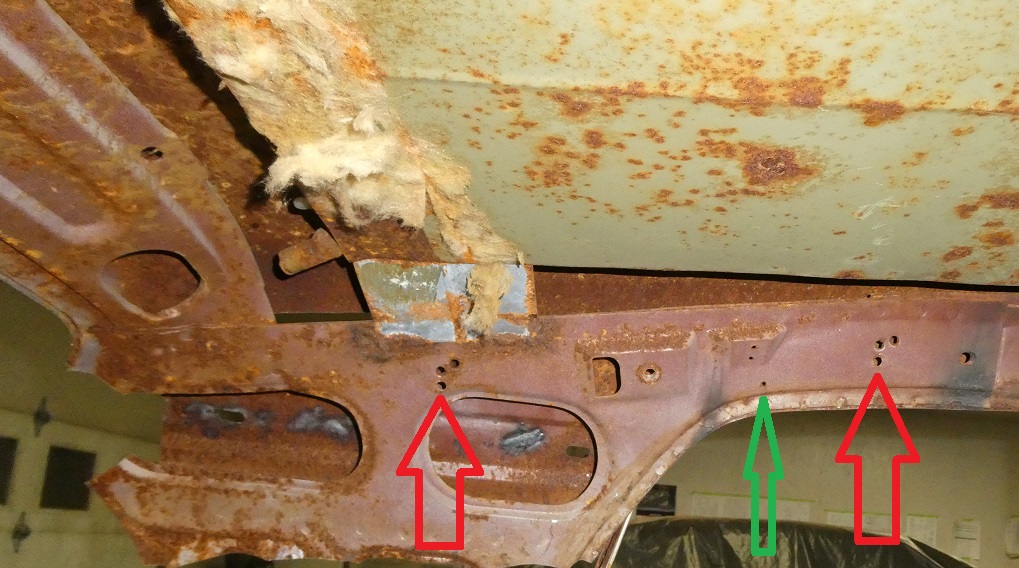 |
ASC had to make modifications for the headliners has the sunroofs stuck down lower than the original factory headliner. They had to lower the listing rods and sew in larger panels of healdiner material to fit around the sunroof opening. In the picture
on the right, the red arrows are pointing to the new listing rod holes that ASC made. The green arrow is pointing to another hole that ASC made. I'm not quite sure at this time, but I think it has to do with with them needed into add a scew
to hold the roof rail trim in place.
|
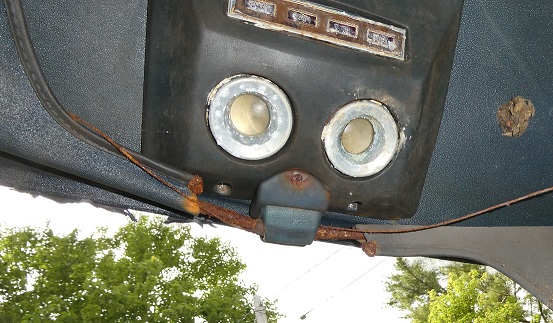

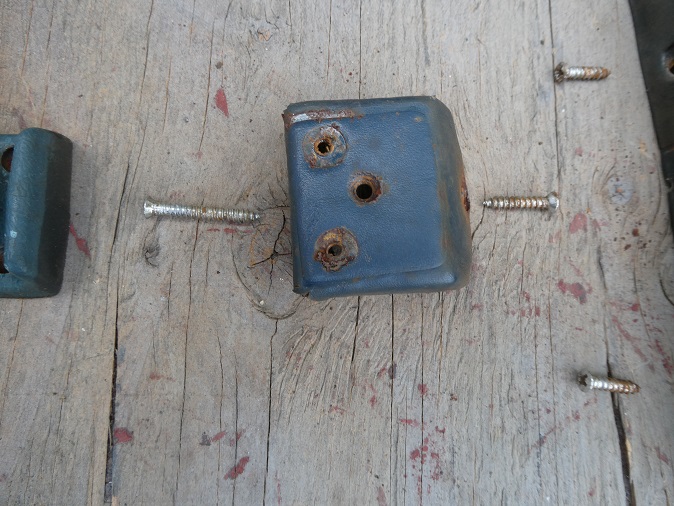
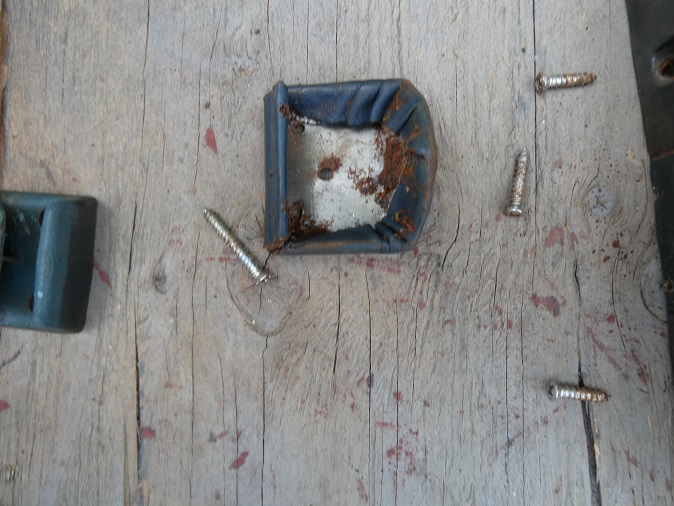 |
XR7-G cars started out as XR7 cars, which came with a roof console. To install the sunroof drive ASC had to move it forward to accomidate the drive gear. This messed with sunvisor center mount. So they devised these little adaptors that
were wrapped in the same leather that the console was.
|
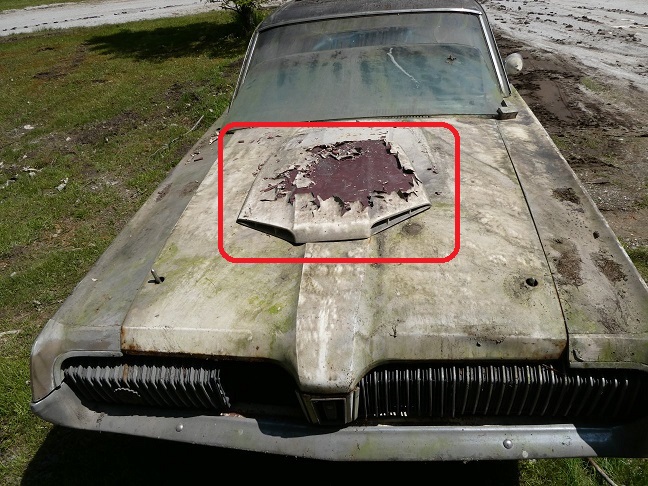

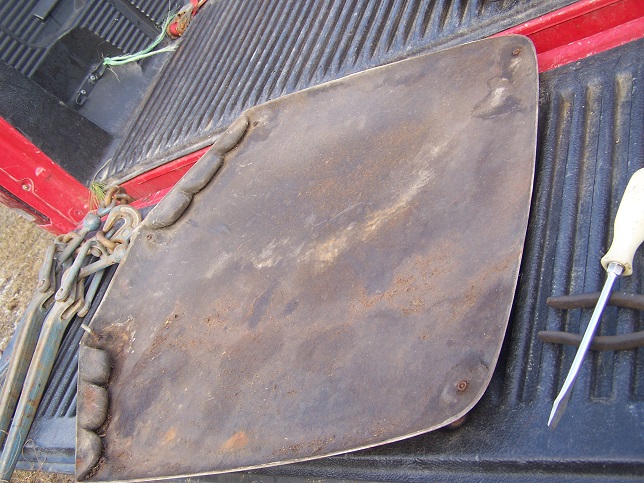 |
The hood scoops are non-functional (except for the the 14 regular production XR7-G cars that came later). They were made by A.O. Smith who also made the 1968 and later Shelby fiberglass pieces. A.O. Smith just painted them body color and
mounted them to the factory installed hoods after drilling mounting holes for them.
|
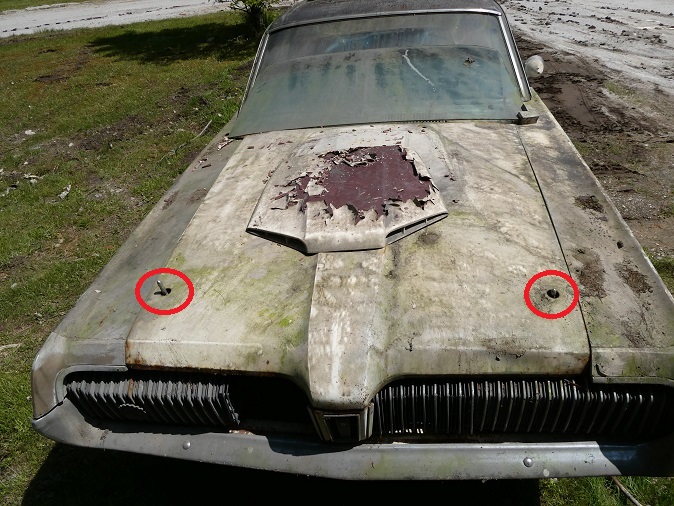
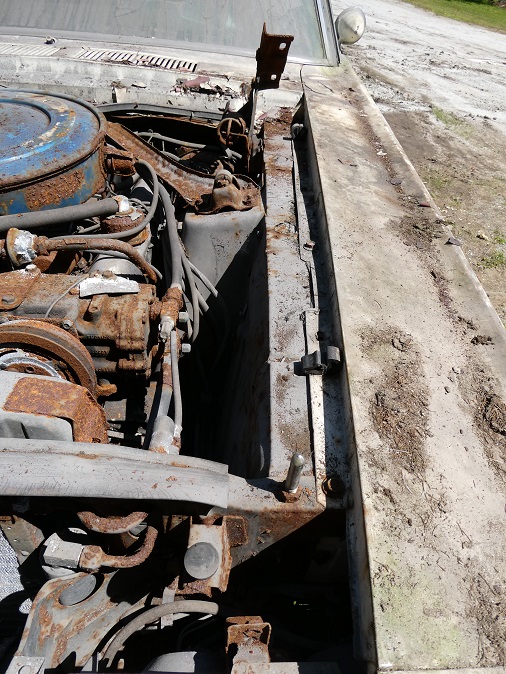
 |
The hood pins are the same as the ones on the 68 Shelby's. No suprise as they were both converted by A.O. Smith. The lanyards for this car are missing unfortunately, but I do have an NOS pair of the chrome disks that stick to the hood.
|
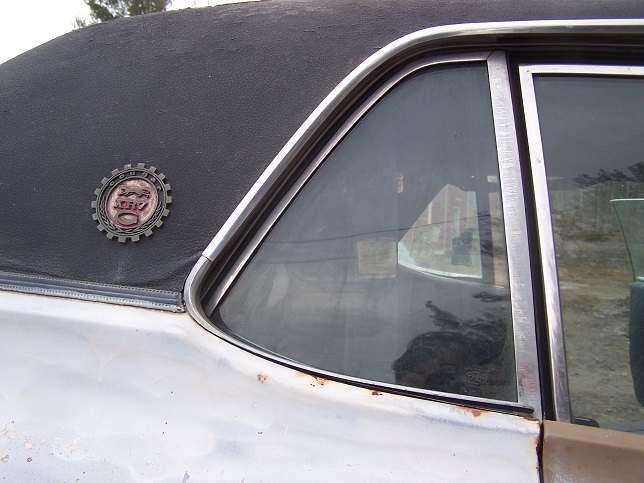
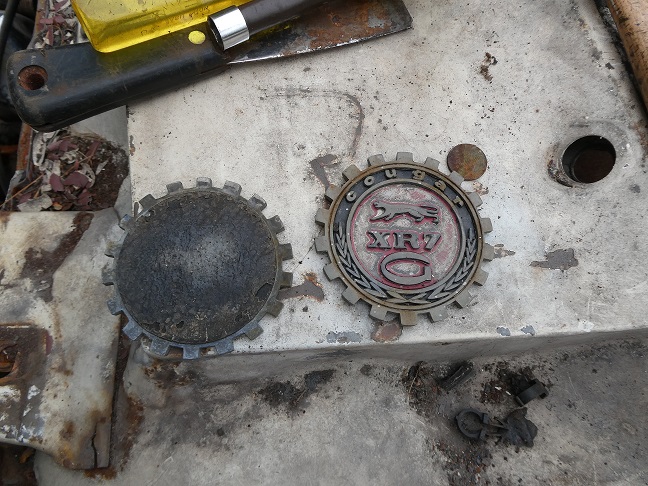
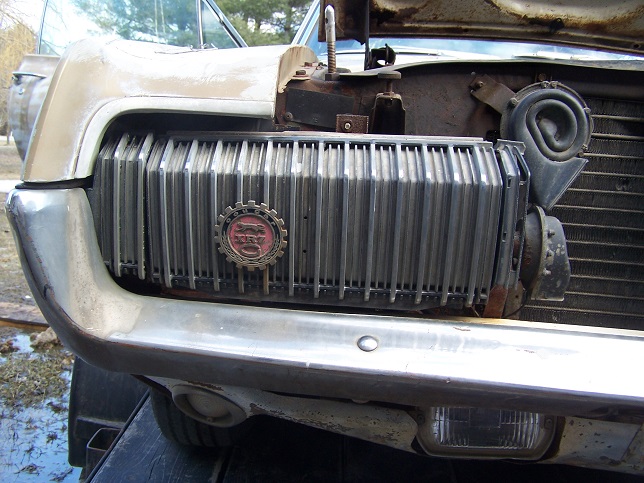 |
The C-Pillar and RH hideaway headlight door have these rally style medalions. The C-pillar ones utilize and adhesive backing. The headlight one adheres to a special mounting piece. If you click on the picture you can see the mounting holes
for the orginal Cougar emblem.
|
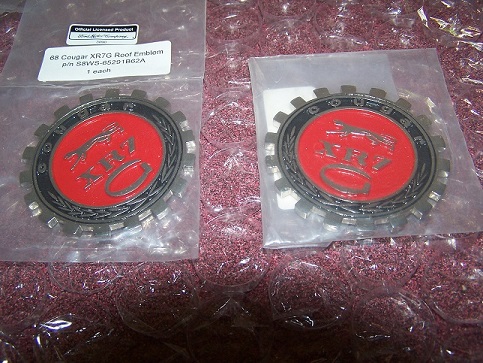
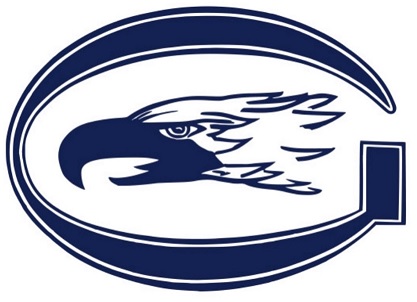 |
When I bought the car back in 2008, I bought all of the XR7-G specific parts that I was missing or thought I needed to replace. The XR7-G medallions are correctly reproduced at that time. I think they were made using the original tooling.
One thing to notebesides that the "G" in the model is for Dan Gurney, is that they used the letter "G" font from his racing logo.
|
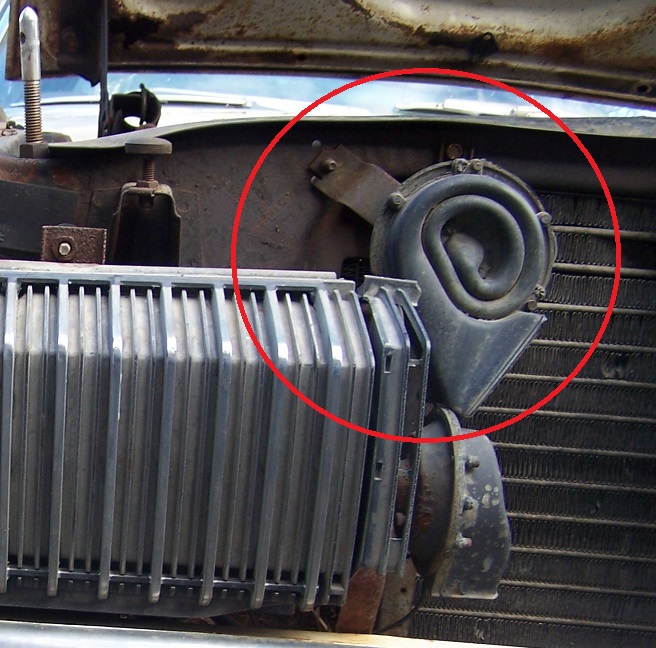 |
As part of the XR7-G, a third horn was added to the car. It was a Delo-Remy horn, as shown in this picture. This horn was added by A.O. Smith, which up used to make Corvette bodies for GM prior to 68.
|
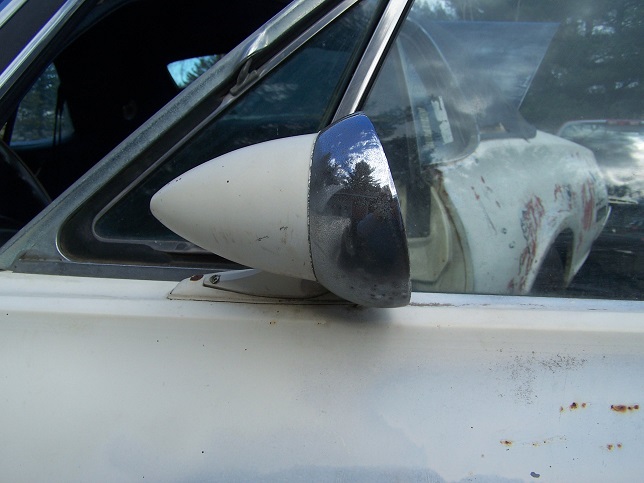
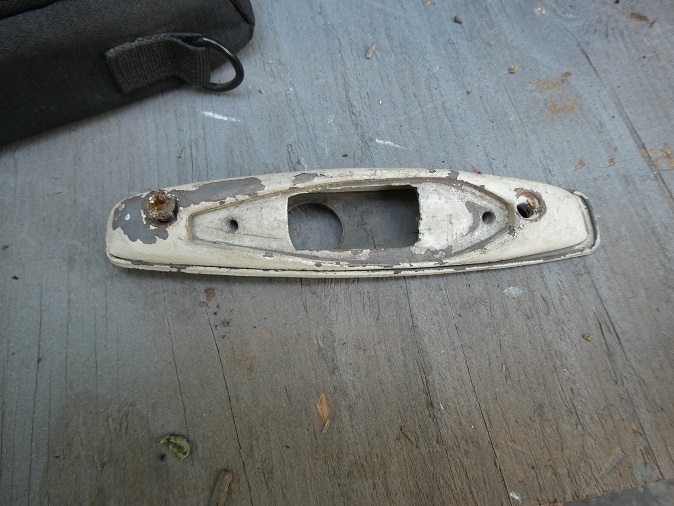

 |
The original factory mirror was also replaced by A.O. Smith with a Talbot racing mirror. A.O. Smith created a special adaptor base to locate the mirror in the original one's place. It appears that there was an issue with the front mouting
hole as the factory rivenut was missing and there was a speed nut used to hold the mirror in place at the front.
|
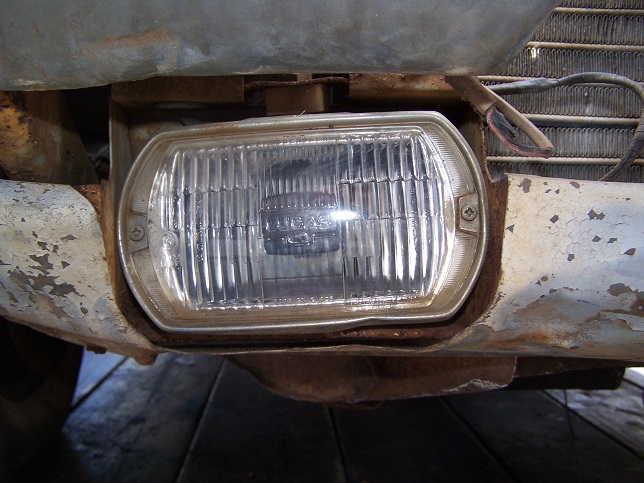
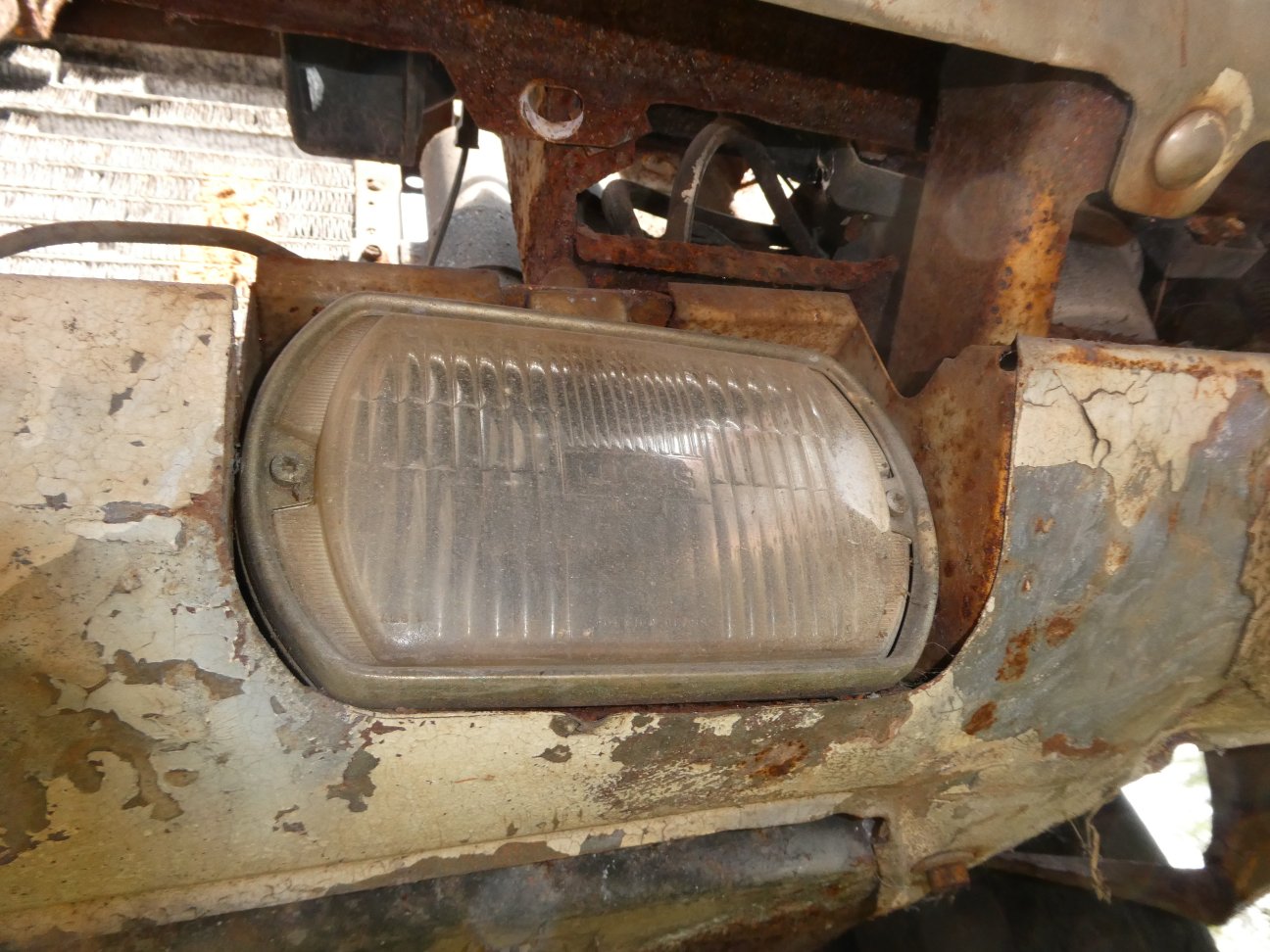
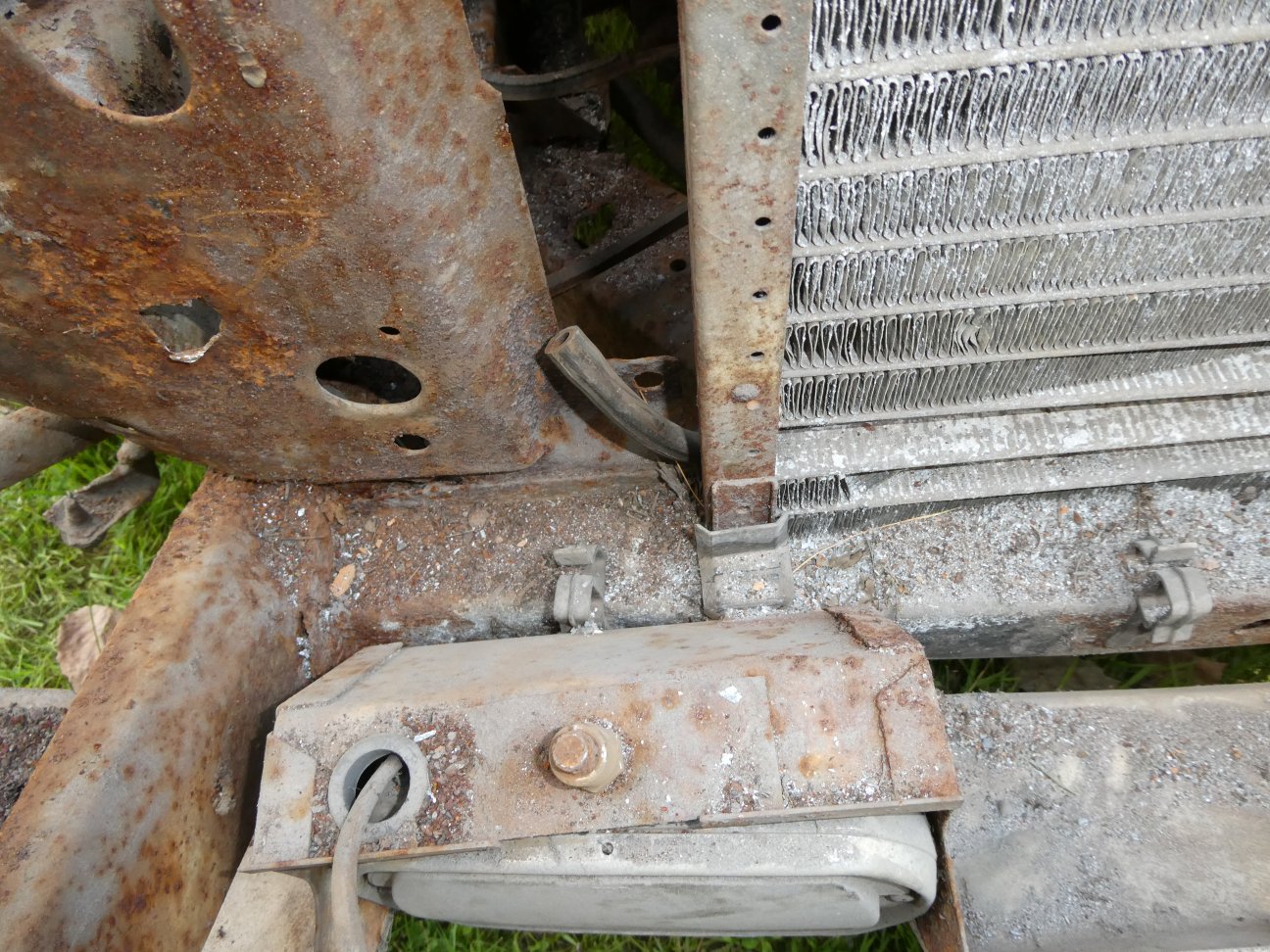 |
A.O. Smith made special modifications to the front lower valance to hold in these Lucas fog lights. Again they are the same assemblies as used on the 68 Shelbys.
|
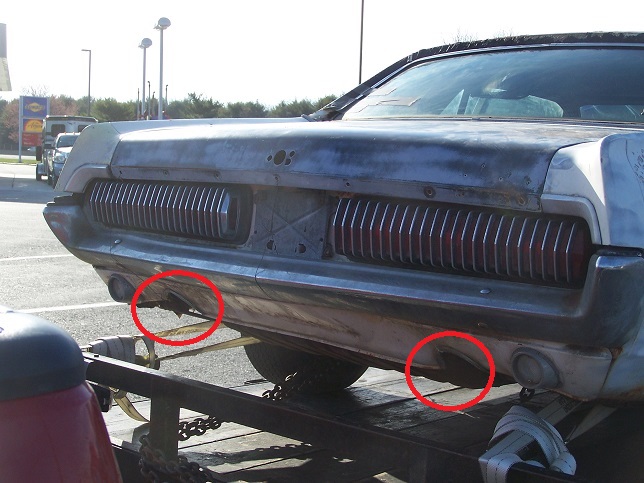
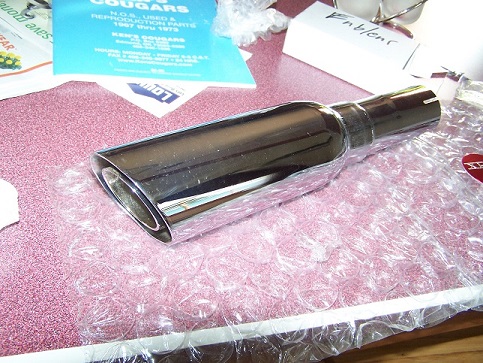 |
A.O. Smith installed these pipe in pipe exhaust tips. To do this they had to make two big U-cuts in the rear valance, which they dressed up with a pair of chromed U-shaped parts.
|
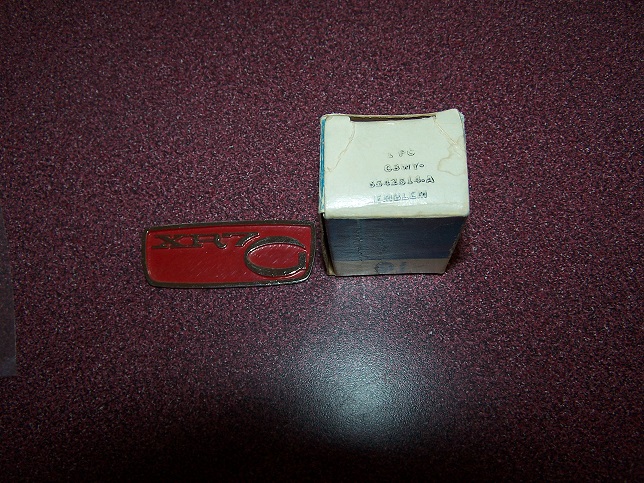 |
The door on the XR7 trunk lock was replaced with a special XR7-G. I was able to find an NOS one on ebay back in 2008.
|
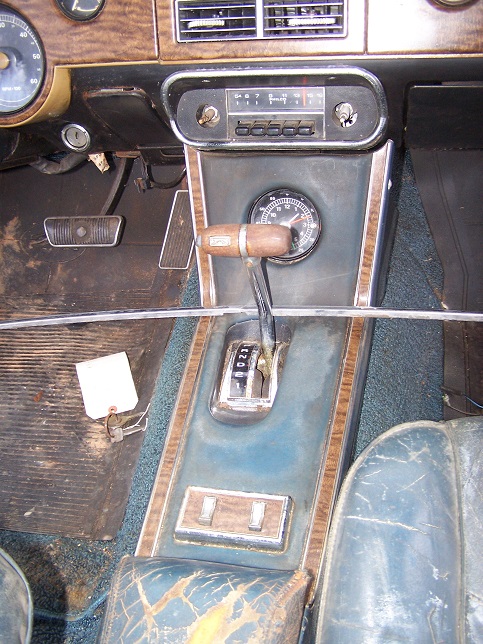
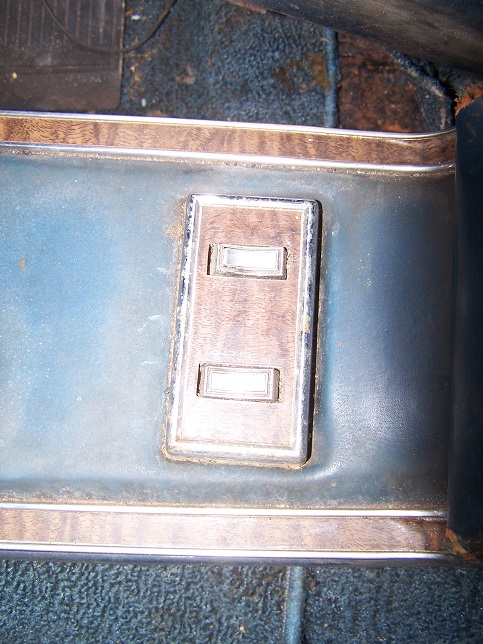
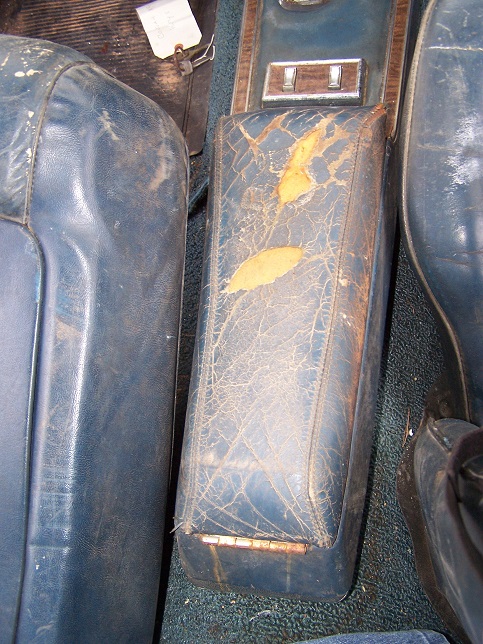
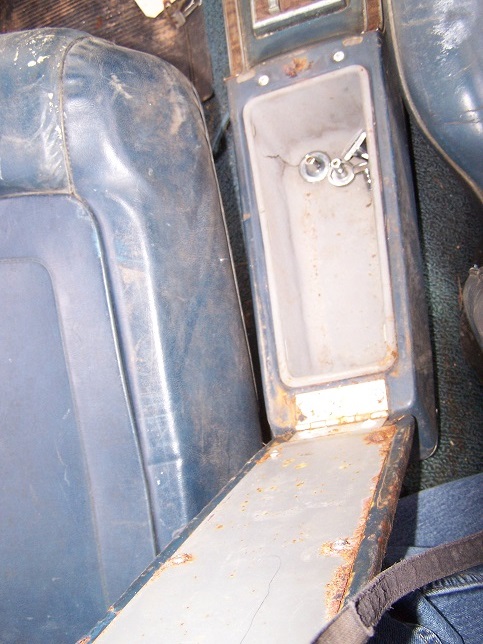 |
The console was also customized by A.O. Smith. They modified the base and added this custom top piece that is dressed in leather to match the interior and accent trim to match the dash. A switch block was added to control
the sunroof and the fig lights. The console box liner is also a custom made part, which is quite flimsy and is not reproduced. I will have to find a way to fix the cracks in it.
|
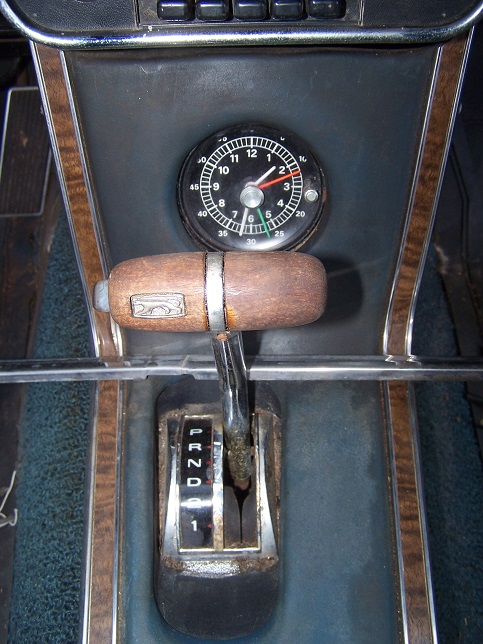 |
The wooden shift handle also received this cougar inlay.
|
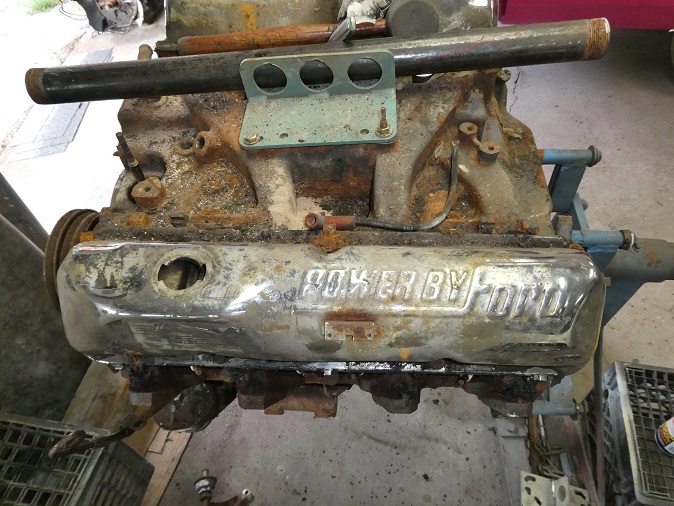 |
Though not a unique part, all Hertz cars uses the chrome Powered By Ford valve covers. The regular production XR7-Gs that came later would have mostly recieved special ribbed covers with a cougar logo on them.
|
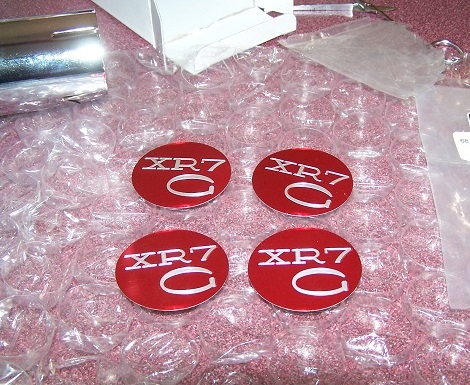 |
The Hertz cars all received simulated spoked wheels Rader wheels made by Trans American Products. That were adorned with these cener cap decals. The wheels were all recalled, so Ford replaced them with styled wheels.
The decals were retained.
|
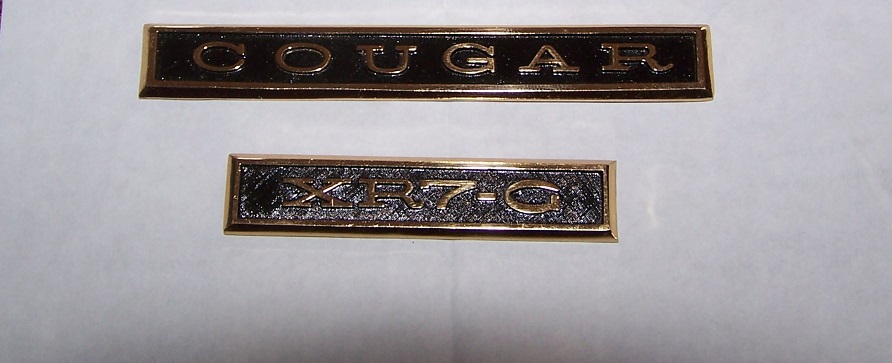 |
Though the originals were stolen, the G-cars also received these gold dash emblems. I was able to locate an NOS set of them back in 2008.
Another interior time to note was that A.O. Smith wrapped the steering wheels with the same leather wrap as the 68 Shelbys. This will probably be a hard item for me to locate.
|












































